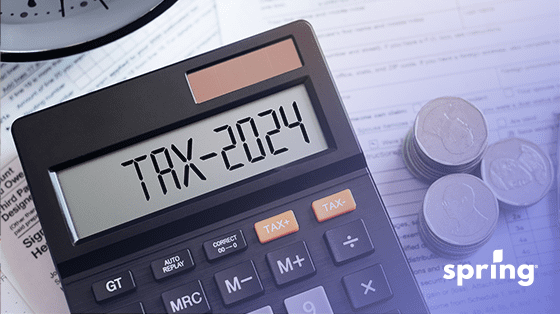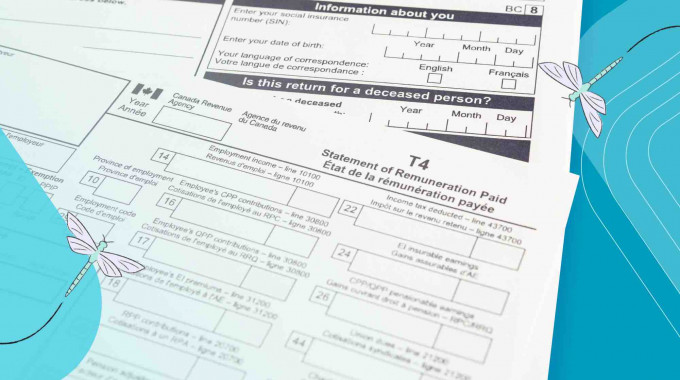Will you have a company pension? Will you only receive CPP? How much CPP will you receive? Let’s take a look at both of these scenarios. Keep in mind, though, that these numbers don’t include any individual retirement savings, only government and private pension plans.
Company Pensions
When it comes to a workplace pension, it really is difficult to determine what the average income from an employer sponsored pension is because they all work differently. They are based on your yearly salary, as well as how many years you have paid into the plan. This plan is paid into by you as well as your employer. This type of pension isn’t set as an investment, it is just based on what it contributed.
There are other types of employer sponsored plans known as Group RRSPs (Registered Retirement Savings Plan). How this works is you open the RRSP, but both you and your employer contribute to it. This does fluctuate based on the market, but because you open the RRSP, you can choose how you want to invest it.
You can also get something known as a Pooled Registered Pension Plan. For this one, your employer does not need to contribute. It is designed for people who don’t normally get workplace pensions, but your employer is able to contribute if they choose. Money in PRPP is invested so what you receive in retirement depends on how your investment does.
If you live in Quebec, you may be eligible for something called the Voluntary Retirement Savings Plan. This plan is available if your employer doesn’t offer PRPPs, and it works in a similar way. It’s mainly meant for those who don’t have standard workplace pensions or for those who are self-employed and wish to save for retirement.
With all of these different types of pensions, it is difficult to determine what the average pension amount will be. There are too many factors. If you get CPP, however, the average amount of that can easily be determined.
Canada Pension Plan
The Canada Pension Plan (CPP) is a monthly taxable benefit that is meant to replace your income when you retire. To receive CPP you do need to qualify, but once you qualify you will receive it for the rest of your life. Before you apply, there are a few conditions that you need to meet first.
- In order to qualify for CPP, you must be at least 60 years old.
- You also must have at least made one valid contribution to CPP.
CPP Amounts
If you are eligible for CPP in Canada, the amount you will receive is based on what your average earning salary was, what your CPP contributions were, and what age you decided to start receiving CPP.
Most Canadians choose to wait until age 65 to start receiving CPP, but you can start receiving it as early as 60. That being said, you reach your maximum benefit amount when you hit 70. Even if you wait until later to apply, you won’t receive any more money. These are the updated amounts for 2023.
| Age to Start Receiving CPP | Average CPP Payment (Monthly) | Maximum Amount (Monthly) |
| 60 | $458.98 | $836.20 |
| 65 | $717.15 | $1,306.57 |
| 70 | $1,018.35 | $1,855.33 |
In order to figure out how much you could be getting from your CPP retirement pension monthly, you can get your estimated CPP payment calculation by logging into your My Service Canada account.
There is also the Canadian Retirement Income Calculator. If you want to know what your current pensionable earnings and contributions to the plan are, you can find your statement of contributions under your My Service Canada account, as well.
How Long you have to Work to get Maximum CPP Benefits
In order to qualify for the max CPP amount, you must have worked for at least 39 of the 47 years between the ages of 18 and 65. On top of that, you must also make the maximum CPP contributions for at least 39 of those years.
The amount you pay is based on your yearly annual pensionable earnings. These earning amounts are set by the CRA (Canada Revenue Agency). For 2023, the yearly maximum pensionable earnings is $66, 600.
Can you get CPP if you’ve never Worked?
In short, yes you can. If you are at least 65 years of age and have lived in Canada for at least 10 years, you can still get CPP even if you have never worked.
Pension Sharing your CPP
With your CPP retirement pension, you are able to share it with your spouse or common law partner. In order to pension share, though, you must be already receiving your pension payments or be eligible to start receiving them. You must also be living with your spouse or common law partner to qualify. The main benefit of pension sharing is saving money on your income taxes.
When it comes to income sharing there are two ways you can do it. You can either share the one pension if only one person contributed to the Canada Pension Plan or the Quebec Pension Plan or, if 2 people contributed, you can share both pensions. When it comes to sharing both pensions, the combined total stays the same.
2023 CPP Payment Dates
When it comes to CPP retirement pensions, the payments are received monthly. Here is a list of the dates for 2023.
- January 27, 2023
- February 24, 2023
- March 29, 2023
- April 26, 2023
- May 29, 2023
- June 28, 2023
- July 27, 2023
- August 29, 2023
- September 27, 2023
- October 27, 2023
- November 28, 2023
- December 20, 2023

Other Benefit Amounts from CPP
Other than just your regular monthly CPP amounts. CPP does have other benefits as well. These are:
- The CPP Disability Benefit
- The Survivors Pension
- The Death Benefit
CPP Disability
To be eligible for the CPP disability benefit you must be younger than 65 and have made enough CPP contributions. You must also have a mental or physical disability that stops you from obtaining gainful employment and this disability must be long term or is likely to result in death.
If you get the CPP disability benefit before you turn 65, then once you turn 65 it will change to the regular CPP Pension Benefits. If you are applying and are between the ages of 60 and 65 and have already been receiving CPP for at least 15 months or became disabled after getting CPP, then you can get something called the CPP post-retirement disability benefit.
The average amount received with the CPP disability pension is $1,078.07. The maximum benefit amount that you can get is $$1,538.67.
Survivors Pension
The CPP survivor’s pension is a benefit amount that is given to the surviving spouse or common law partner of someone who contributed to the Canada Pension Plan. If you are eligible for this benefit and receive your own CPP payments, it will be combined with those payments.
If you have married more than once, you are only eligible for one survivor’s pension. That being said, you will receive the pension that is for a larger amount.
How much you receive for the survivor’s pension depends on age. If you are under 65 you receive a flat rate as well as 35% on the contributors pension amount. If you are 65 years of age or older you can get up to 60% of the contributors pension amount, if you aren’t receiving other CPP benefits.
| Age | Average Benefit Amount | Maximum Benefit Amount |
| Under 65 | $480.52 | $707.95 |
| 65 and older | $313.59 | $783.94 |
Death Benefits
The CPP death benefit is just what it sounds like. It is a one time payment to the estate or other eligible individuals, on behalf of a deceased CPP contributor.
In order to be eligible for this benefit, the deceased must have made CPP contributors for at least ⅓ of the years in their contributory period for the base CPP. This can be no less than 3 years. It can also be 10 calendar years.
The average amount for new beneficiaries as of October 2022 is $2,499.44. The maximum payment amount for January 2023 is $2.500. Keep in mind that this is a lump sum payment.
Retirement Pension in Quebec
Quebec has a different retirement income program than the rest of Canada, it is called the Quebec Pension Plan. This plan provides those who have or currently do work in Quebec with basic financial assistance in the case of retirement, death or even disability.
How the retirement pension portion of the benefit works is that have are employee contributions and have are employer contributions. To pay employee contributions you must be at least 18 years of age and make more than $3,500. If you are self-employed you must pay full contributions.
In 2022, the maximum pensionable earnings for QPP were $64,900. Let’s take a look at what the payment amounts are.
| Benefits | Monthly Amount |
| Death Benefit | $2,500 lump sum |
| Pension age 65 | $1,253.59 |
| Pension age 60 | $802.30 |
| Pension age 70 | $1,780.10 |
| Disability Pension | $1,463.83 |
| Addition disability amount in retirement | $524.61 |
Other Government Pension Amounts
Another pension amount you can get from the federal government is OAS, also known as old age security. The amount that you receive for OAS is determined by how long you have lived in Canada since the age of 18. OAS payments are considered taxable income. That being said, if your taxable income is higher than $79,845 for 2021 (the net world income threshold set for the year), then you could be subject to recovery tax.
Along with OAS, there are three other benefits that are available through the Old Age Security Program. These are the Guaranteed Income Supplement, the Allowance and the Allowance for the Survivor. The payment amounts for these programs are based on age, marital status, and income. Unlike the OAS, these aren’t considered to be taxable income.
Full OAS Pension Payment Amounts
OAS payments are given out every month. Below are the amounts you should receive for January -March 2023. These amounts are subject to change and tend to go up slightly every year.
| Age | Max Payment Amount | Net World Income Threshold 2021 |
| 65-74 | $687.56 | Less than $129.757 |
| 75 and older | $756.32 | Less than $129.757 |
Supplementing Retirement Income
For a lot of Canadians, their only retirement income is CPP, others also have an RRSP. That being said, because your pre-retirement income is often a lot higher than what your retirement income will be, some people like to have separate retirement savings and it isn’t always in the form of an RRSP.
When it comes to retirement planning there are a lot of ways that you can save up some money. You can just put it in your personal savings or a tax free savings account. Whichever works for you. There are a lot of things you can do so you can have a bit of extra money on top of your retirement income.








